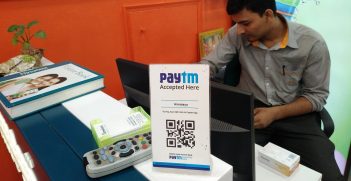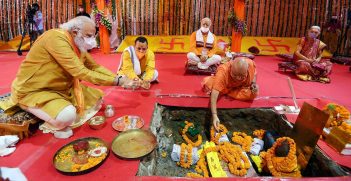Narendra Modi’s State Visit to the US: The “Next Generation Partnership”

The India-US relationship continues to move from strength to strength. As tensions between the US and China grows, new doors open for greater technology flows to the sub-continent.
During his first state visit to the US in June, Prime Minister Narendra Modi addressed the Joint Session of Congress, held talks with President Joe Biden, and concluded agreements aimed at strengthening the US-India Comprehensive Global and Strategic Partnership. During the bilateral summit, Biden and Modi announced a long number of commitments that covered a wide range of topics, including defence and security, cooperation in space, and emerging technologies with a path towards technology transference in jet engines, drones, health, energy, and mobility. Biden and Modi termed the deepening ties between the two countries as the “Next Generation Partnership.” Amid the escalating strategic tensions between the US and China, India has assumed a significant position in US efforts to combat major global concerns like climate change, artificial intelligence, mending the global supply chain, and safeguarding a free, secure, and open Indo-Pacific.
The US-India Strategic Partnership
India-US relations have come a long way. During the Cold War era, relations between the two countries were not particularly cordial. The end of the Cold War gave both countries new flexibility to mend their relations. Despite India’s nuclear test in 1998, ties between the two countries continued to improve, and since that time, they have only continued to deepen across multiple fields.
The signing of the US-India civilian nuclear accord marked a key turning point in the post-Cold War relationship, which removed India from it’s nearly three-decade-long nuclear pariah status. This ended the system of technological exclusion for India and paved the way for collaboration in the civilian nuclear energy sector, as well as the transfer of high-tech and sensitive defense technologies to India.
Significant improvements were made throughout the George W. Bush and Atal Bihari Vajapayee administrations, and India and the US were positioned as “natural allies.” With the rise of China, and in the post-911 security environment, both leaders worked to establish a more stable course for the US-India relationship. The current partnership finds its antecedent goodwill in these initial dealings.
The shared commitment to democratic values, principles, a democratic way of life, and safeguarding democratic norms and institutions has served as the foundation for both nations’ ties over the years. Modi and Biden reiterated their dedication to democracy by citing the fact that the founding documents of their respective nations begin with the words “We the people.”
Towards Space and Technology Collaboration: Tackling China’s Assertiveness in the Indo-Pacific
Biden and Modi reaffirmed their unwavering commitment to a free, open, inclusive, peaceful, and prosperous Indo-Pacific region with respect for territorial integrity and sovereignty as well as international law. The growing and robust India-US bonhomie is likely to have a considerable impact on geopolitical considerations in the Indo-Pacific, and is keenly monitored by China. The technological aspect of the relationship is significant because renewable energy and space have become contested subjects, where China has enormous stakes. While India is also starting to emerge as a major player in these fields, China has largely dominated the renewable energy industry and has made major strides in space technology. Through its projects like “Made in China 2025” and ”China Standards 2035,” China has made rapid advancements in the fields of information and technology, renewable energy, and space exploration. Beijing intends to control critical and emerging technology industries through these agendas.
These measures by China, coupled with its more belligerent military posture, have only sped up efforts by the US and India to band together and develop closer defence and technological relations. Both nations have been working to improve their high-end technology collaboration. Additionally, both nations are using diplomatic channels to address concerns brought on by the digital revolution, such as data privacy, cybercrime, national security, and terrorism. Biden and Modi inaugurated the Initiative on Critical and Emerging Technologies (iCET) in Japan prior to Modi’s trip to the US. The United States and India have also agreed to collaborate on a range of research projects, including in the fields of data science, artificial intelligence, agriculture, and the environment. Various research institutions are involved in tech research and development to achieve the goals of iCET signed in May 2022, considered to be the first major accord towards the next generation partnership.
The emphasis on artificial intelligence, critical technology, trade, and the promise of transferring emerging technologies only serves to further demonstrate the mutual trust both increasingly share in each nation. The US-India Comprehensive Global and Strategic Partnership will be characterised by increased cooperation in the fields of space, artificial intelligence, defence, and technology transfer.
Dr Ashok Sharma is a Visiting Fellow at the University of New South Wales Canberra at the Australian Defence Force Academy, an Adjunct Associate Professor at the Faculty of Business, Government and Law at the University of Canberra, and an Academic Fellow at Australia-India Institute, the University of Melbourne.
This article is published under a Creative Commons License and may be republished with attribution.





